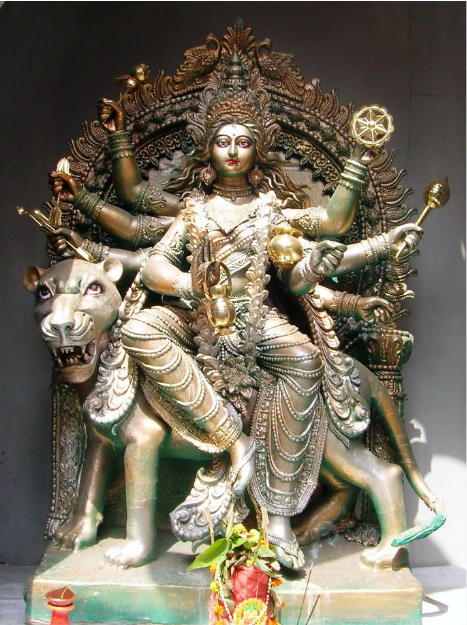Tagged: Bhagwati, Brahmaji, Brahmin, Brihaspati, Chadraghanta, Day3, Devi, Durga Maa, Fasting, Mata Chandraghanta, Navratri, Navratri Day 3, Rituals, sanatan, Stories
- This topic has 0 replies, 1 voice, and was last updated by .
-
AuthorPosts
-
October 16, 2023 at 10:54 pm #1460Up::1
ॐ देवी स्कन्दमातायै नमः
Maa Skandamata is a significant deity in Hinduism, particularly in the worship of the Goddess Durga during the festival of Navratri. She is the fifth form of Goddess Durga and is associated with Lord Skanda, also known as Kartikeya, who is the son of Lord Shiva and Parvati. The history and significance of Maa Skandamata can be found in various Puranas and scriptures, primarily the Devi Bhagavata Purana, which provides details about her origin and importance.
1. Origin: Maa Skandamata’s name is derived from two words: “Skanda,” which is another name for Lord Kartikeya, and “Mata,” which means mother. She is regarded as the divine mother of Lord Skanda, and her worship is a way of venerating Lord Kartikeya. According to the Devi Bhagavata Purana and other texts, she was created by the combined power of the Holy Trinity – Brahma, Vishnu, and Shiva – to assist in the battle against the demon Mahishasura.
2. Iconography: Maa Skandamata is often depicted riding a lion, with a young Kartikeya in her lap. She has four arms, two of which hold lotus flowers, while the other two display Abhaya Mudra (gesture of fearlessness) and Varada Mudra (gesture of granting boons). She is adorned with various ornaments and a crown.
3. Symbolism: Maa Skandamata symbolizes the nurturing and protective aspect of the mother. She is seen as the caring and loving mother who watches over her children. Her lion represents courage and valor, while her son Kartikeya is seen as the embodiment of a warrior.

4. Spiritual Significance: Devotees believe that worshiping Maa Skandamata during Navratri brings strength, protection, and blessings for their children. She is also associated with spiritual awakening and the growth of inner strength.
5. Festivals: Maa Skandamata is particularly worshipped on the fifth day of Navratri, which is known as “Panchami.” Devotees offer prayers and perform rituals to seek her blessings during this time.
The worship of Maa Skandamata, like other forms of the Goddess Durga, is deeply rooted in the rich mythology and religious traditions of Sanatan Dharma. It serves as a reminder of the importance of maternal love, protection, and the divine feminine energy in the lives of devotees.
-
AuthorPosts
- You must be logged in to reply to this topic.